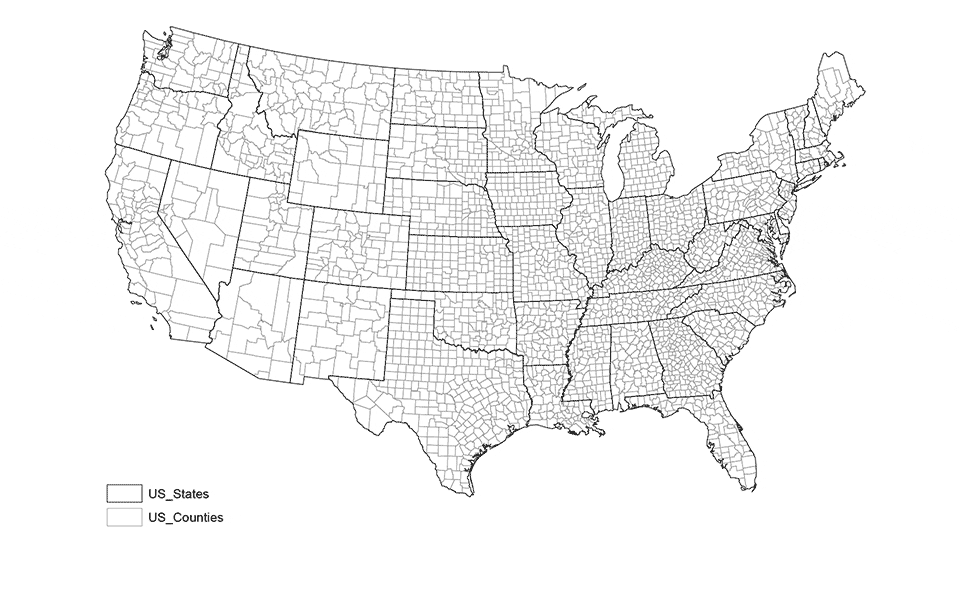
Of the natural hazards in Mother Nature’s arsenal, tornadoes are some of the most vicious. But while other hazards are regularly considered in building designs, tornadoes have not been part of the equation for most structures in the United States, even in highly tornado-prone regions. Now, an upcoming edition of a critical building standard gives tornadoes some much needed attention.
The American Society of Civil Engineers (ASCE) has released a draft version of the 2022 edition of ASCE 7 for public feedback ahead of its final publication in December. This building standard helps engineers determine the loads (or forces) their building should be able to withstand, whether from a hurricane, earthquake, flood or snow. With the new edition, tornadoes may soon join that list, thanks to research spearheaded by the National Institute of Standards and Technology (NIST).
The draft of the new edition features first-of-a-kind tornado hazard maps meant to guide the design of critical facilities, such as schools, fire stations and hospitals, based on their size and geographic location.
“If the standard is ultimately adopted into the building code, it will provide some much-needed basic protection against tornadoes, reducing damages and accelerating recovery especially in the central and southeastern U.S.,” said NIST research structural engineer Marc Levitan, who chairs the ASCE task committee that developed ASCE 7’s new tornado load chapter.
Tornadoes cause more deaths per year than earthquakes and hurricanes combined. And storms spawning tornadoes surpass the collective annual insured losses of hurricanes and tropical storms. But, barring tornado shelters and nuclear power plants, building designs have historically not accounted for tornadoes. The extraordinary strength of tornadoes and a common perception that the risk of being struck by one is low have fed into a misconception that addressing tornadoes in building designs would be far too costly.
That mindset started to shift in 2011, when a record-breaking tornado season wreaked havoc across the U.S. NIST thoroughly investigated one of the worst events that year, a tornado rated as the most severe on the Enhanced Fujita (EF) Scale — an EF5 — that ripped through Joplin, Missouri. Among the more than 8,000 buildings damaged in the tornado’s wake were schools, big-box stores, nursing homes, fire stations and a major hospital, which was eventually demolished.
The NIST team, led by Levitan, found that although the most powerful winds laid waste to buildings near the tornado center, more than 70% of the total damage path stemmed from lower wind speeds farther out. And designing for that level of wind is much more economically viable.
“Building codes and standards don’t require design for the worst possible hurricanes and earthquakes. We need to apply that same philosophy to tornadoes and design for the more modest and more common tornado design speeds,” said Levitan.
ASCE 7 already contains hazard maps for hurricanes and other windstorms that prescribe wind speeds to be considered in the design of buildings in different areas throughout the country. Engineers use these maps to identify strong winds their building might encounter and then, using other sections of the standard, calculate how much pressure that wind will apply to elements of their building, including its frame, walls and roof.
NIST researchers, working with engineers from Applied Research Associates Inc., sought to establish a similar process for tornadoes. But first they had to obtain a great deal of information about where and how often twisters occur and how much their winds push and pull on building components.
The researchers, among other efforts, analyzed and filled in gaps in more than 60 years of tornado records, studied how miniature buildings responded to small-scale vortexes in the lab and performed extensive computer-based structural modeling. And by analyzing damage from Joplin and other tornadoes they were able to back up the performance of their models with real-world data. Then they used their findings to develop tornado hazard maps and methods to help engineers determine what forces their structure would need to stand up against.
The guidance, which now appears in the draft version of ASCE 7, is only required for buildings located in the tornado-prone region of the country, east of the Rocky Mountains, and only for buildings defined as risk categories III or IV. ASCE describes structures in category III as being those that could represent a substantial hazard to human life if they fail. Category IV includes essential facilities.
For risk category III buildings, which include schools and other high-occupancy structures, the standard requires engineers to use maps with wind speeds that have about a 3% chance of being surpassed at least once in 50 years — a common target for service life in building design. That tolerance tightens to 1.7% for vital category IV buildings, such as hospitals or fire stations. The standard also provides additional maps with even higher wind speeds for communities aiming to design sturdier buildings that exceed the minimum requirements.
The maps account for building size too. Their tornado wind speeds change depending on the area of a structure’s footprint, reflecting the fact that the larger the structure is, the more likely it is to be struck by tornadoes.
Once the 2022 edition of ASCE 7 is finalized this December, tornado-prone regions, many of which may have been brutalized by violent twisters in the past, will have the guidance to design new buildings to better weather the next assault. And if the standard is adopted by the model building codes (maintained by independent codes and standards organizations) and those codes are incorporated into U.S. state and local buildings codes, the new practices will become widespread, saving lives and property from one of nature’s most vicious threats.
The draft standard is available for download from the ASCE website (free registration required). Individuals and organizations can provide feedback on the standard through ASCE’s public comment system until July 31, 2021.

